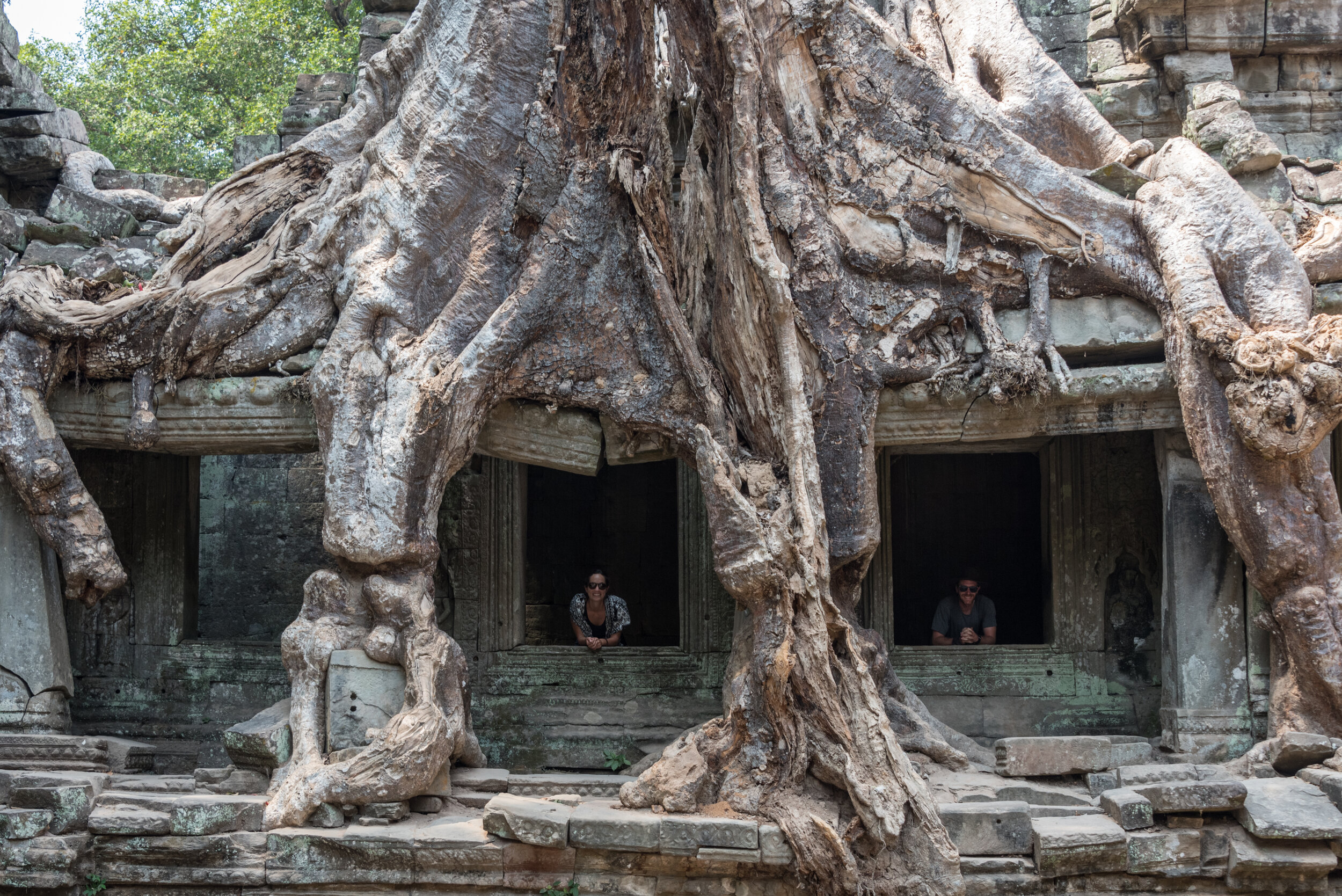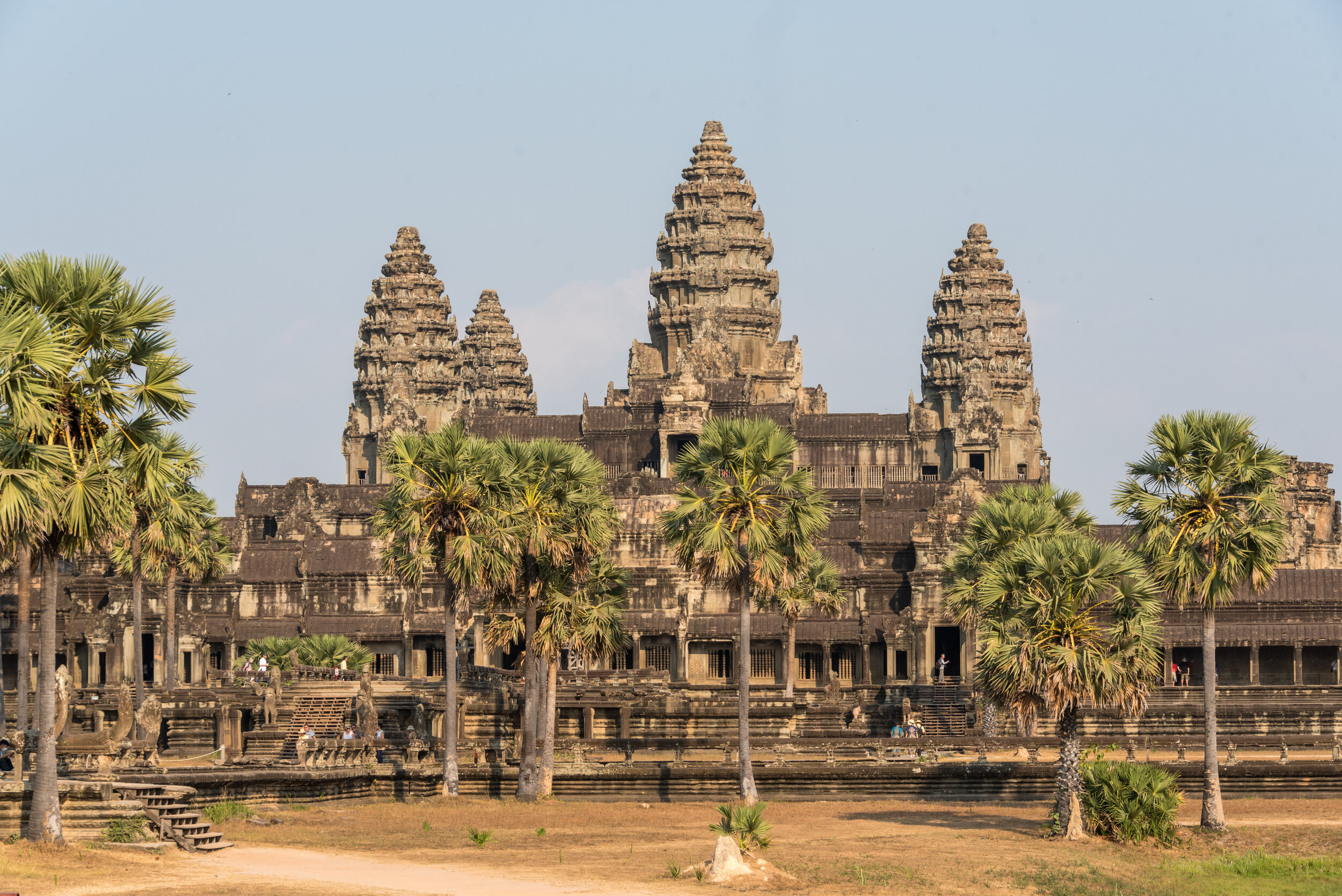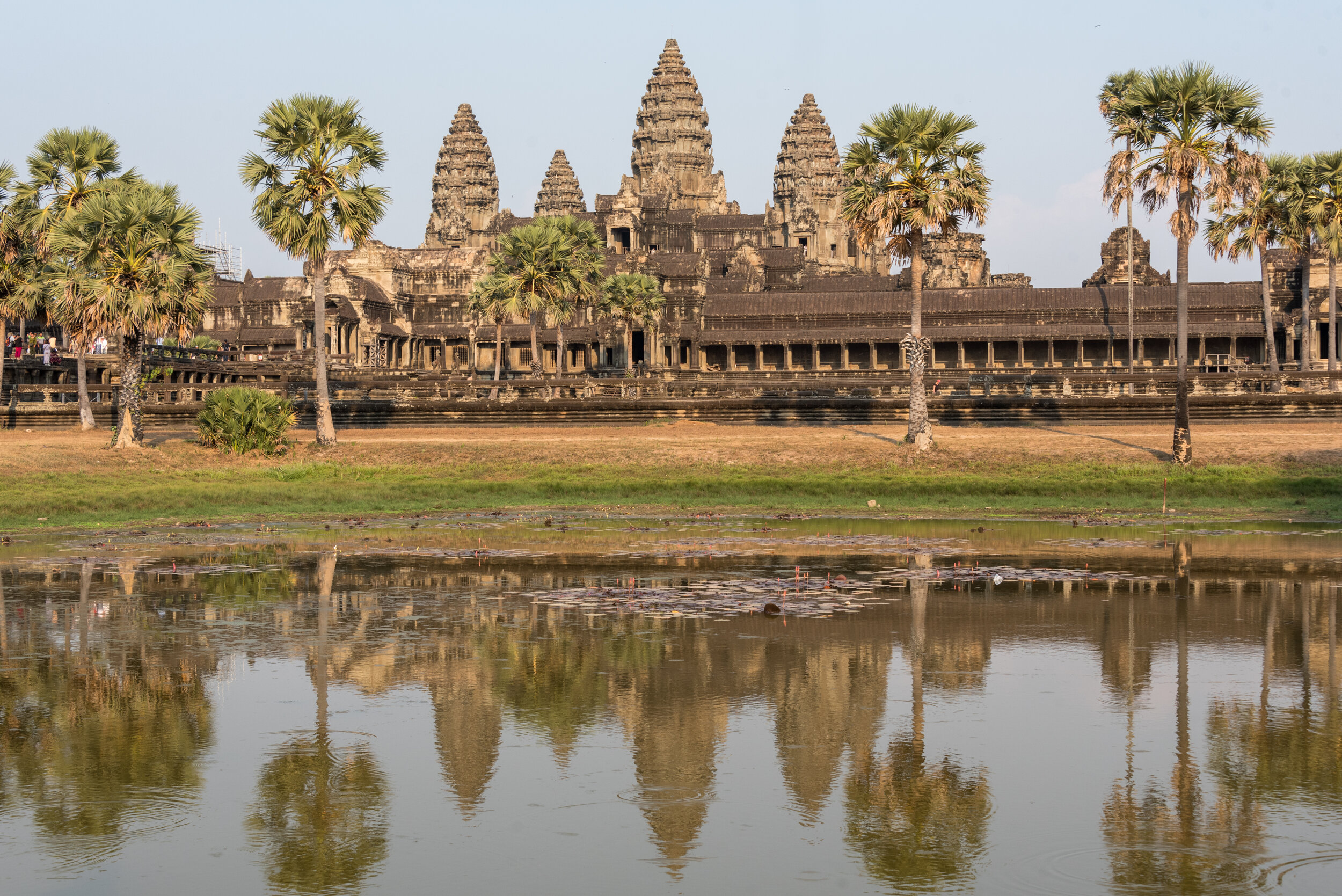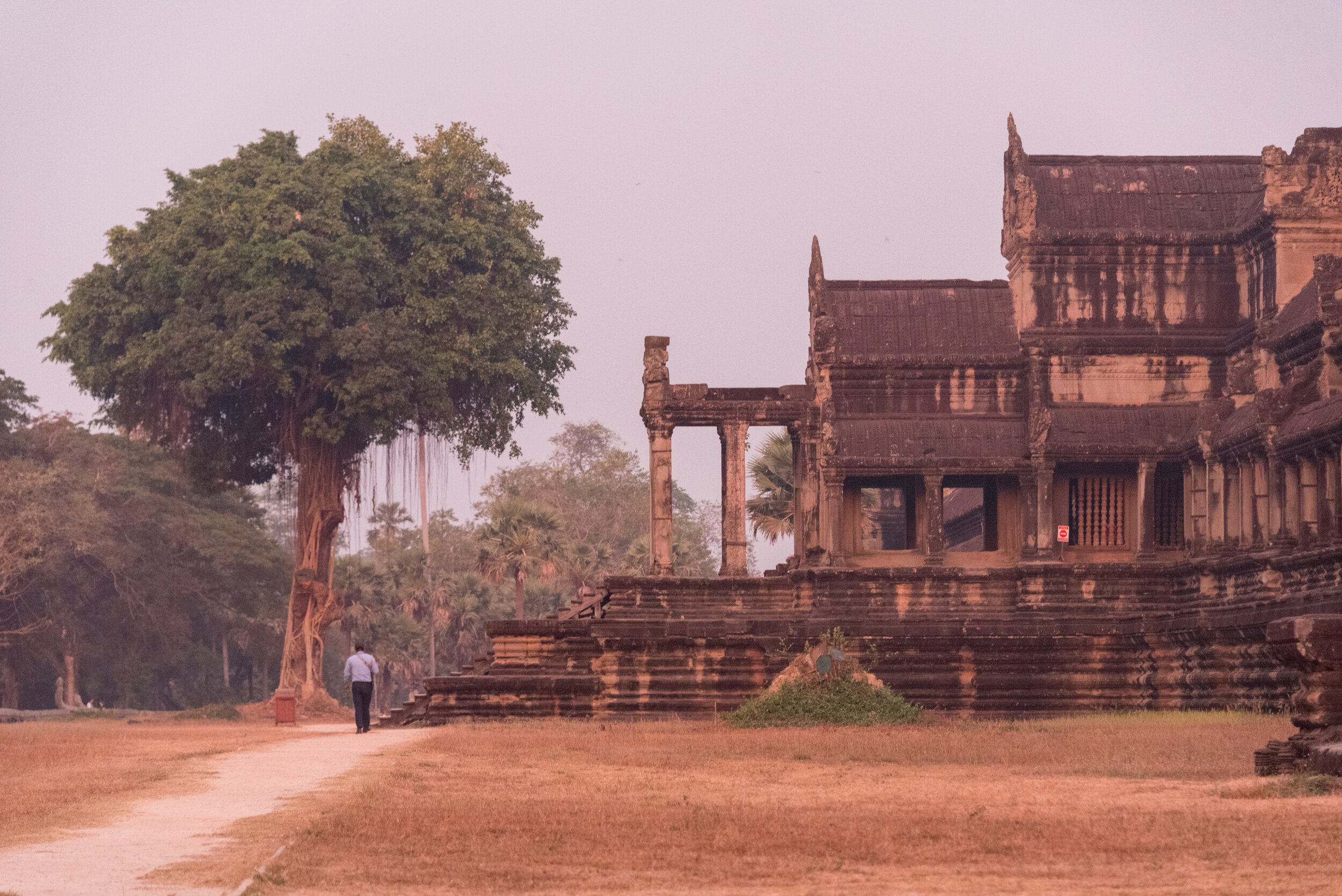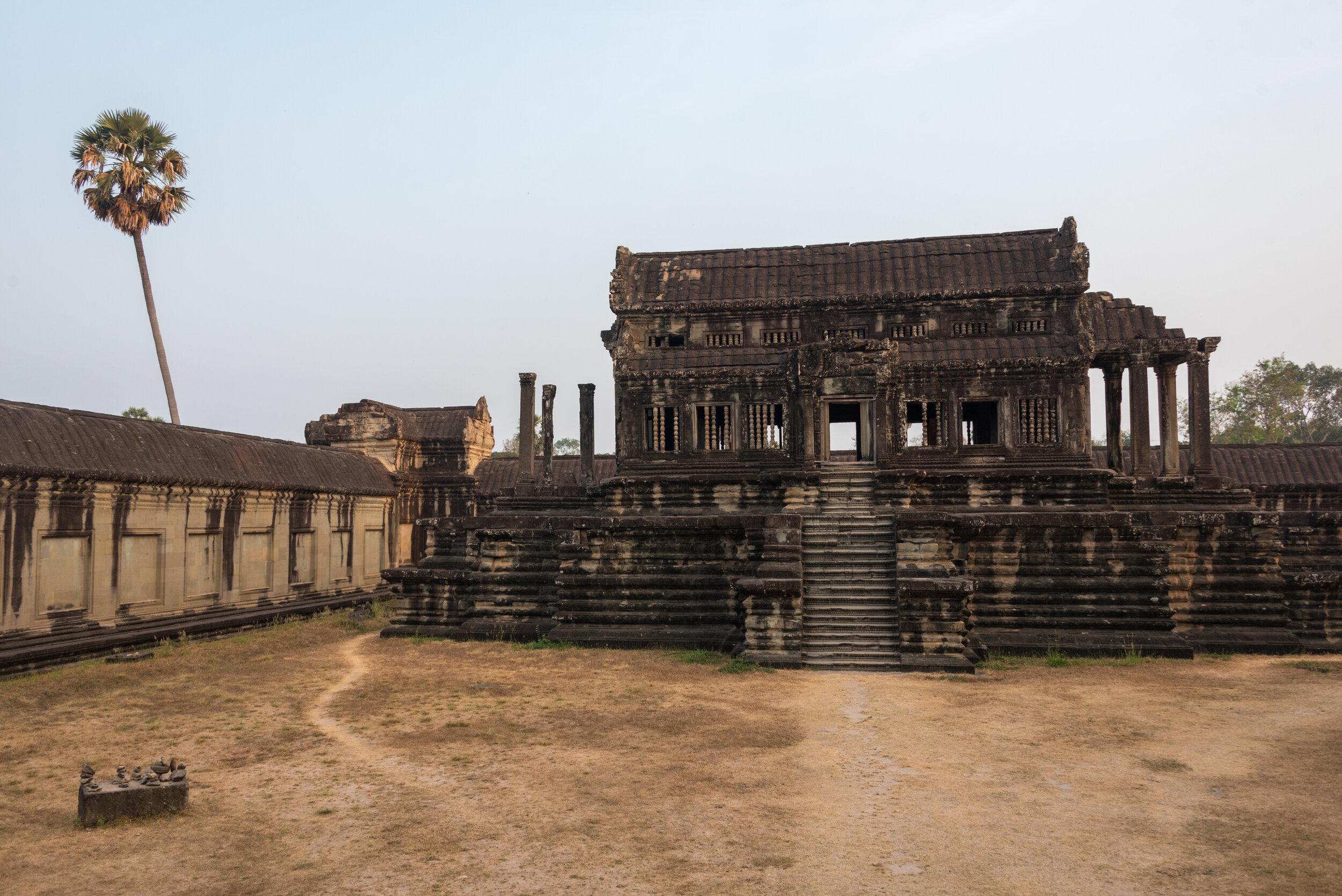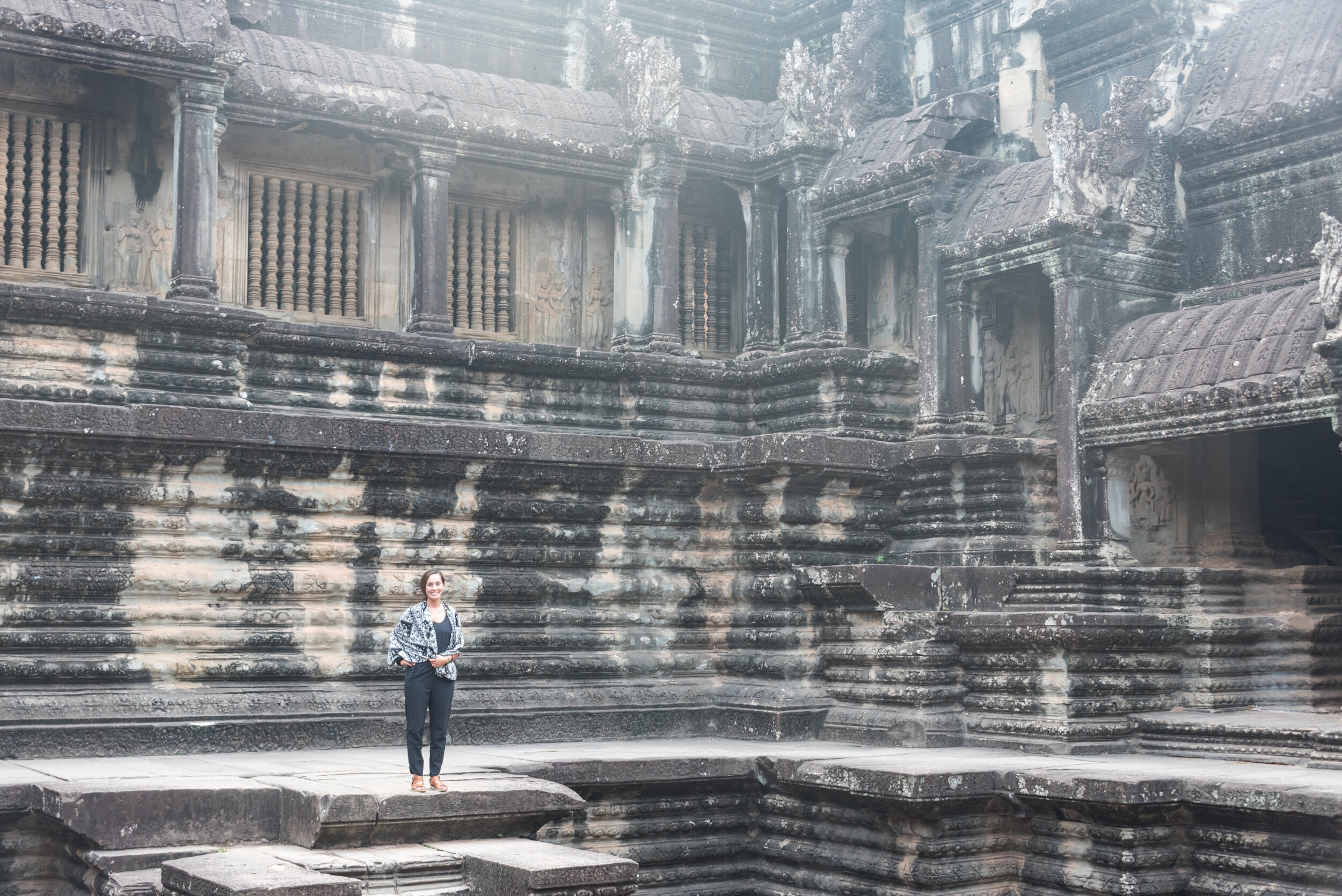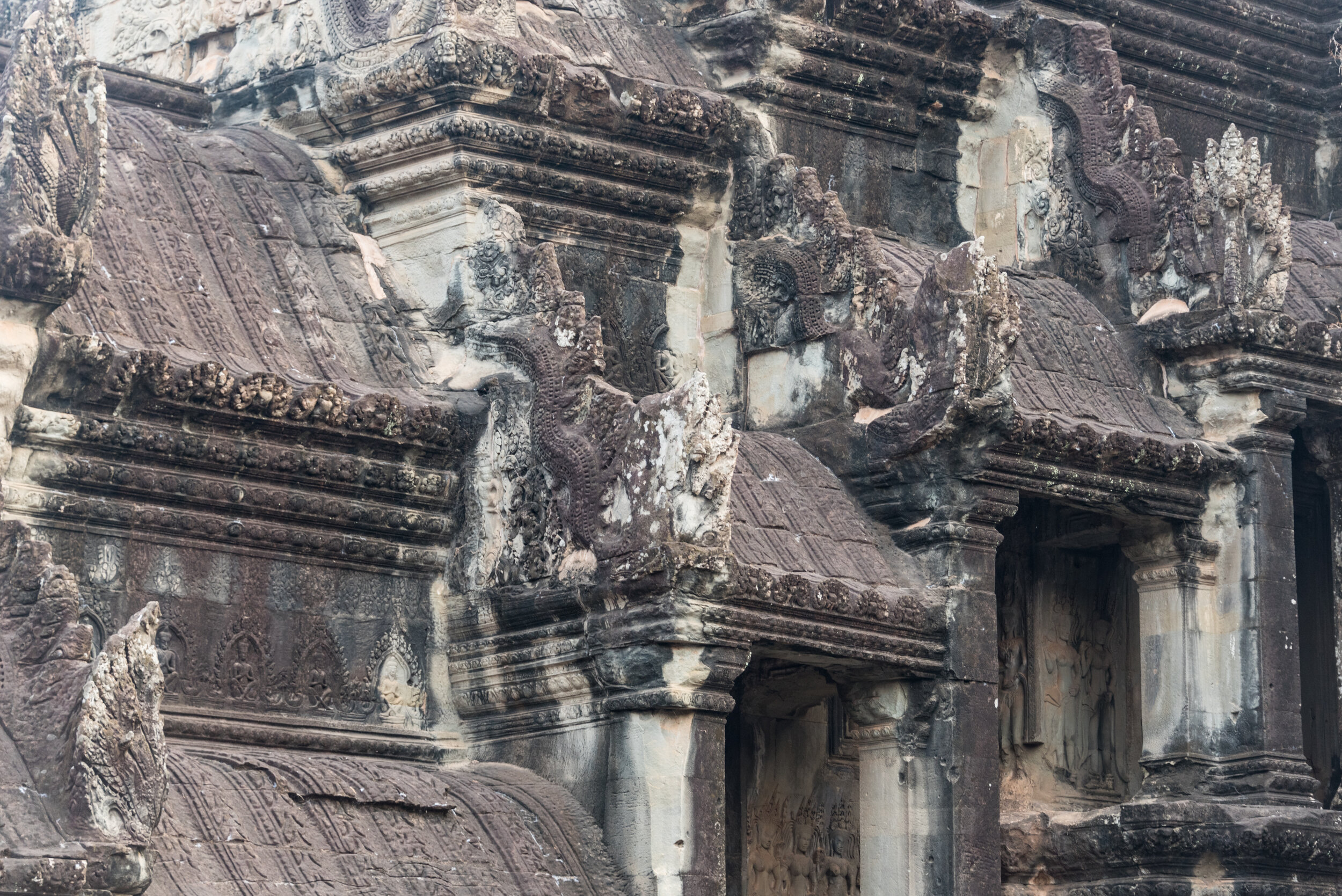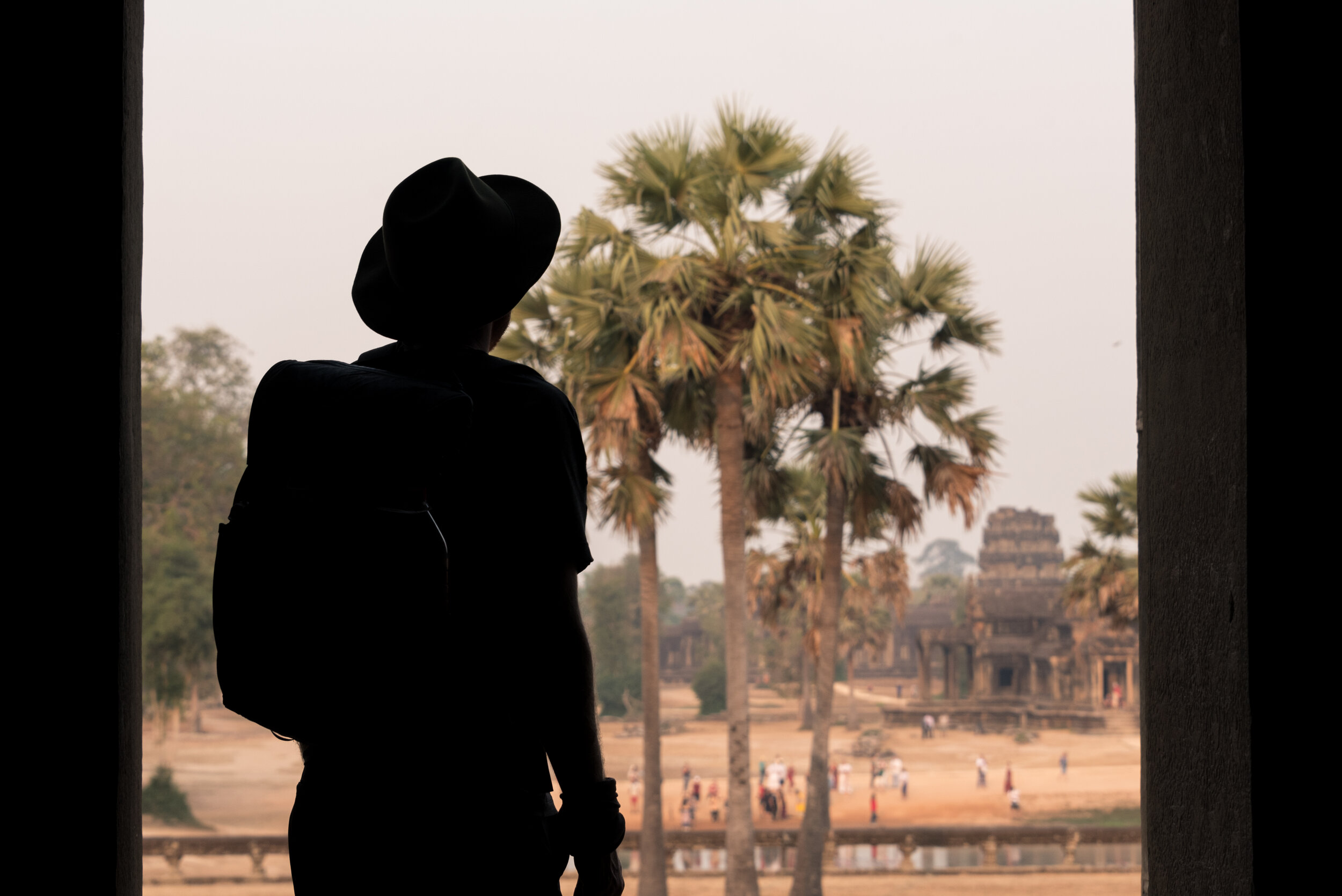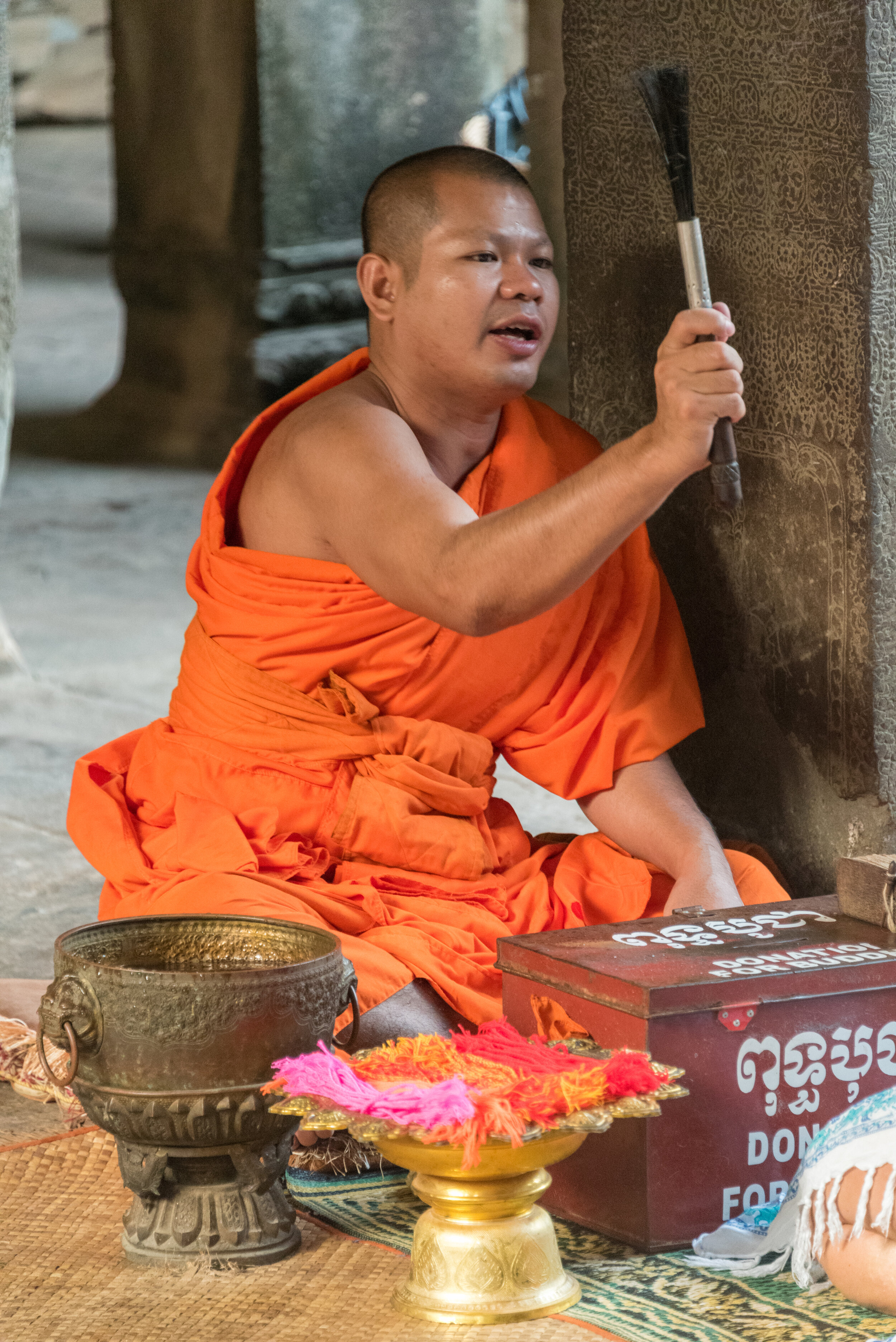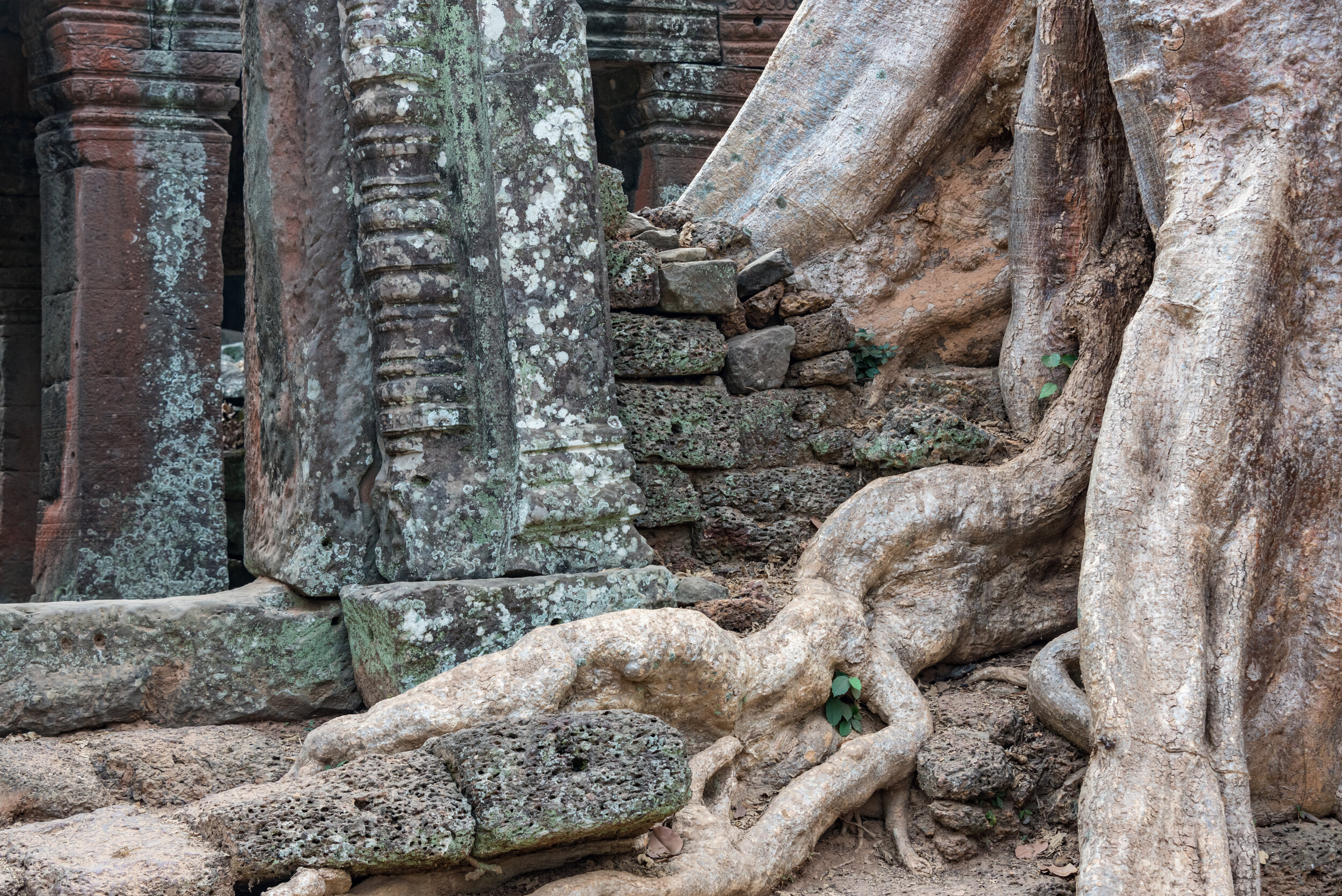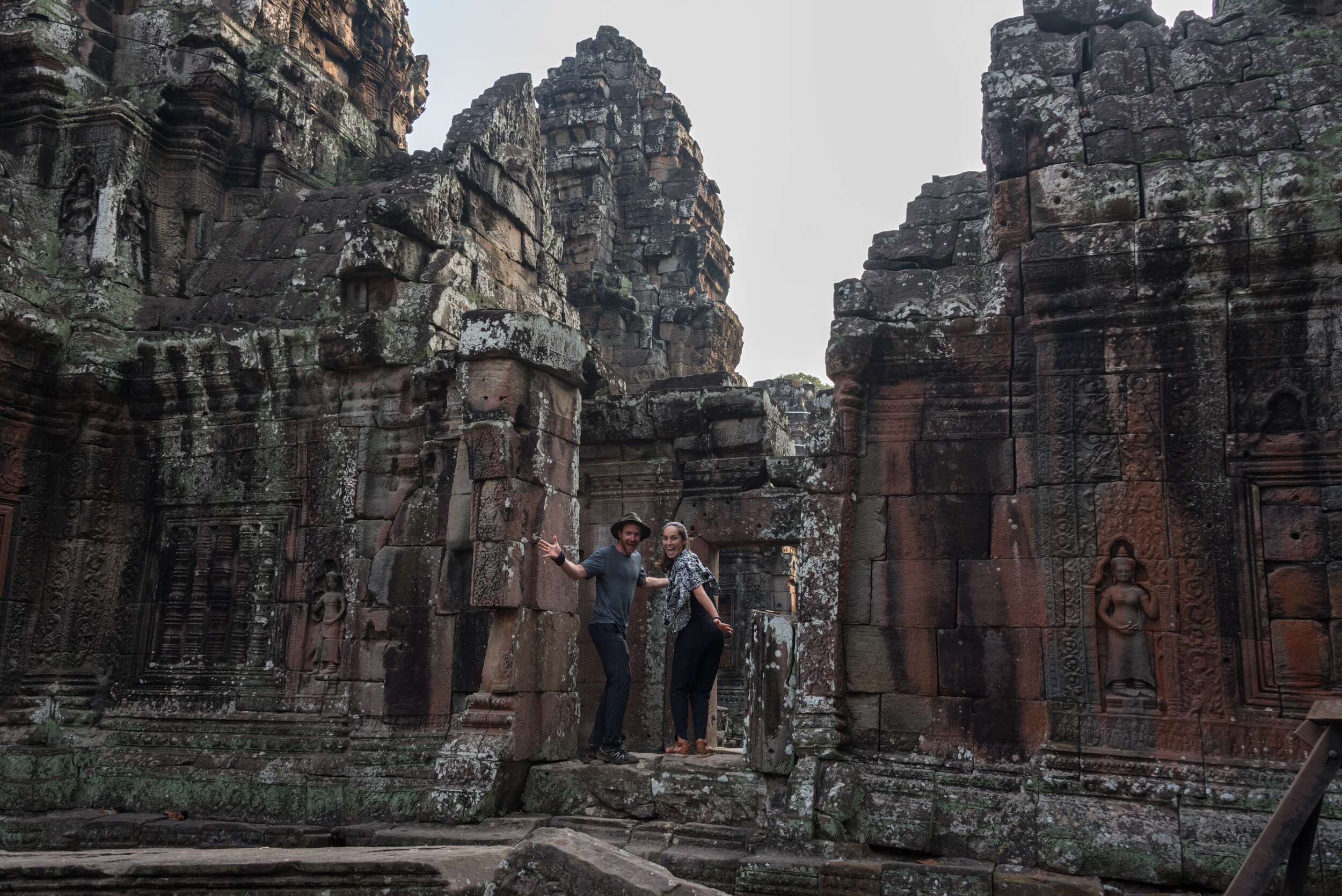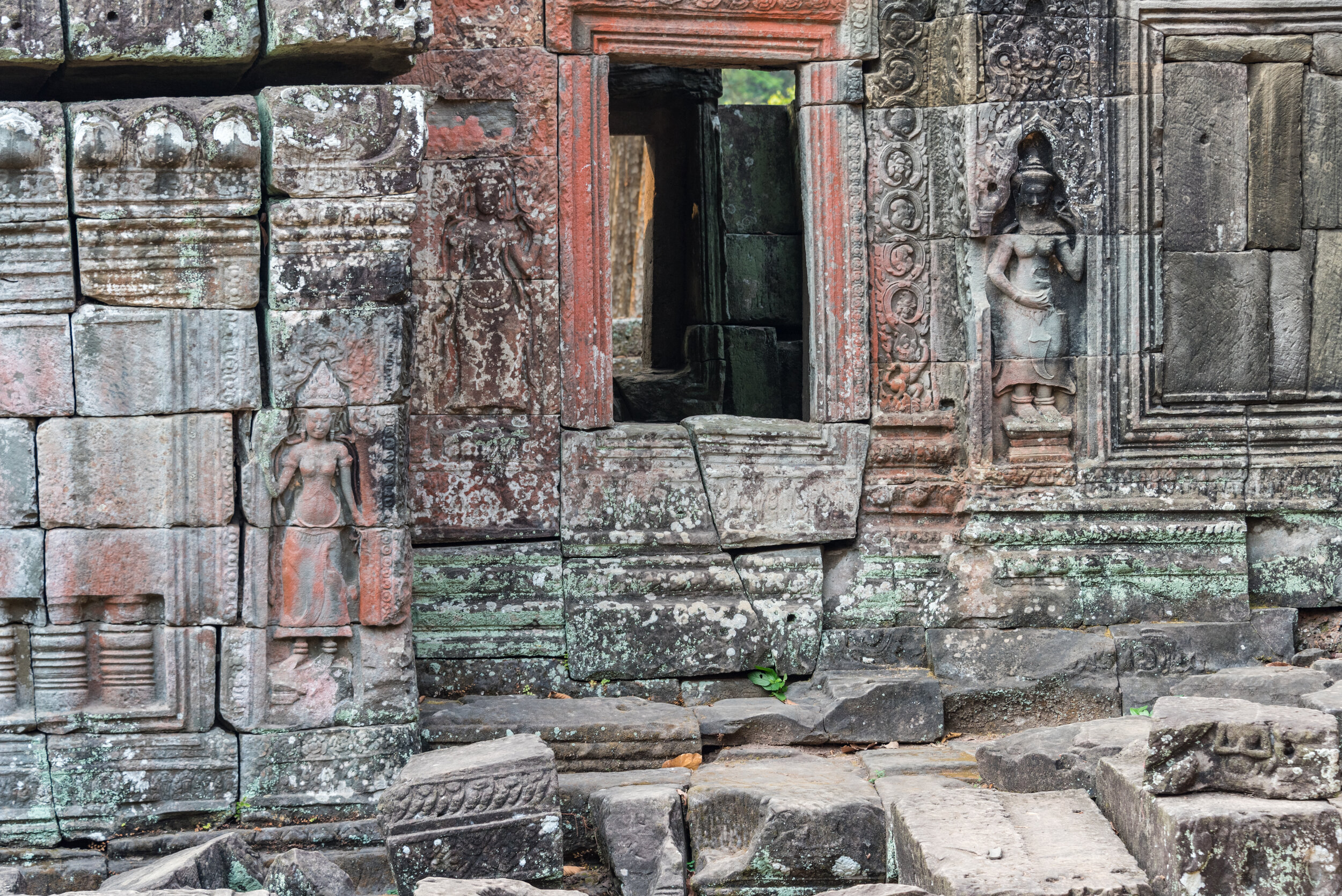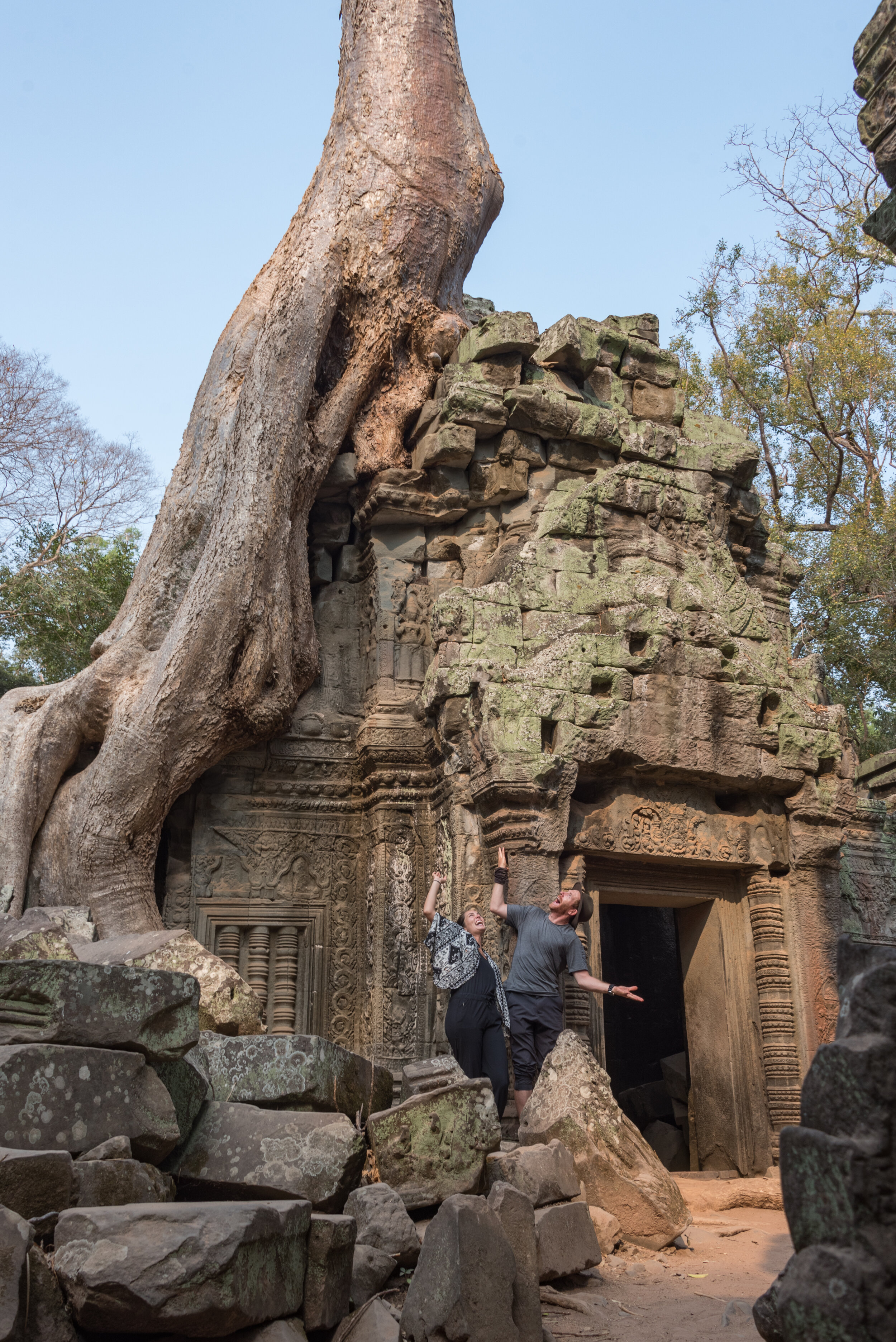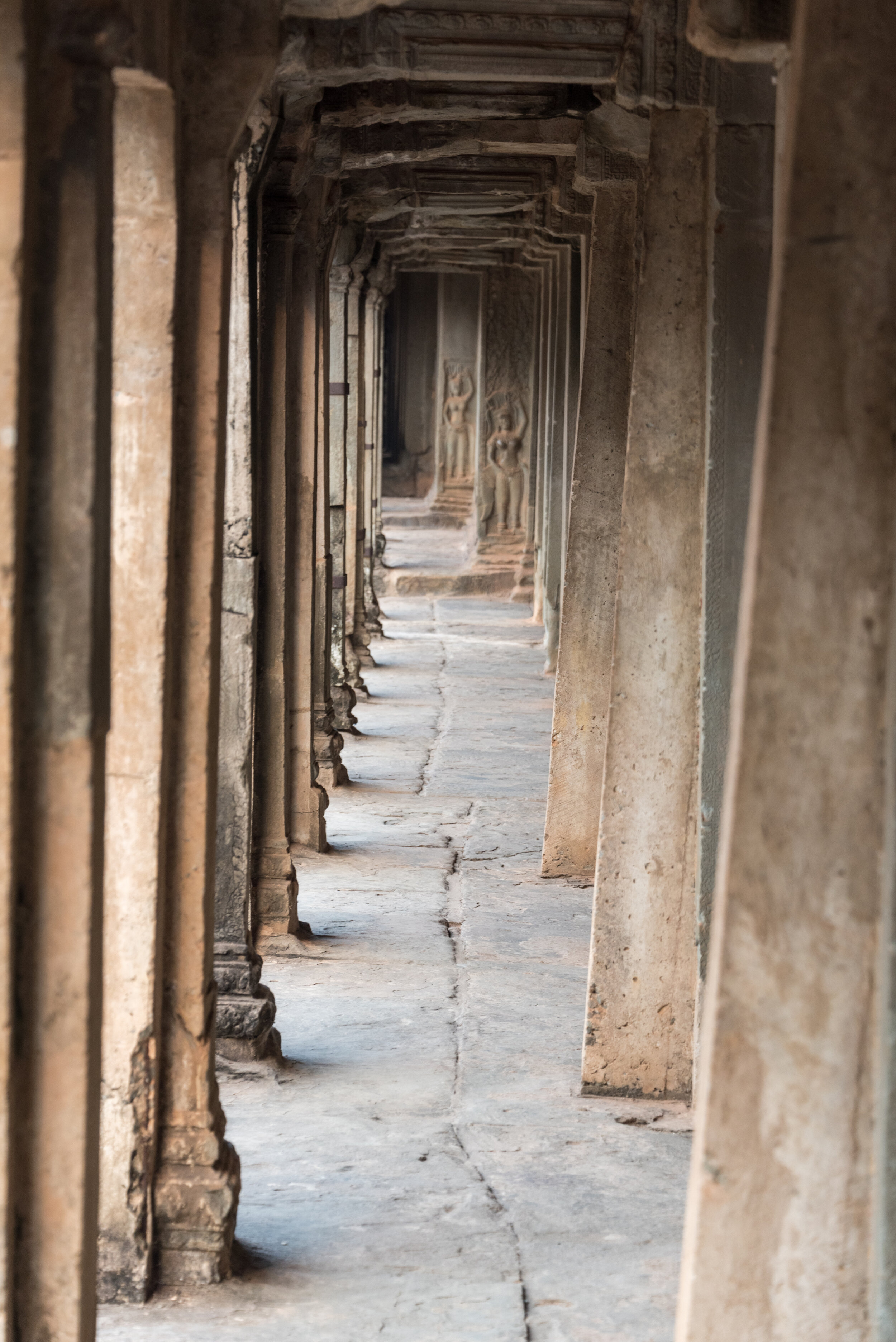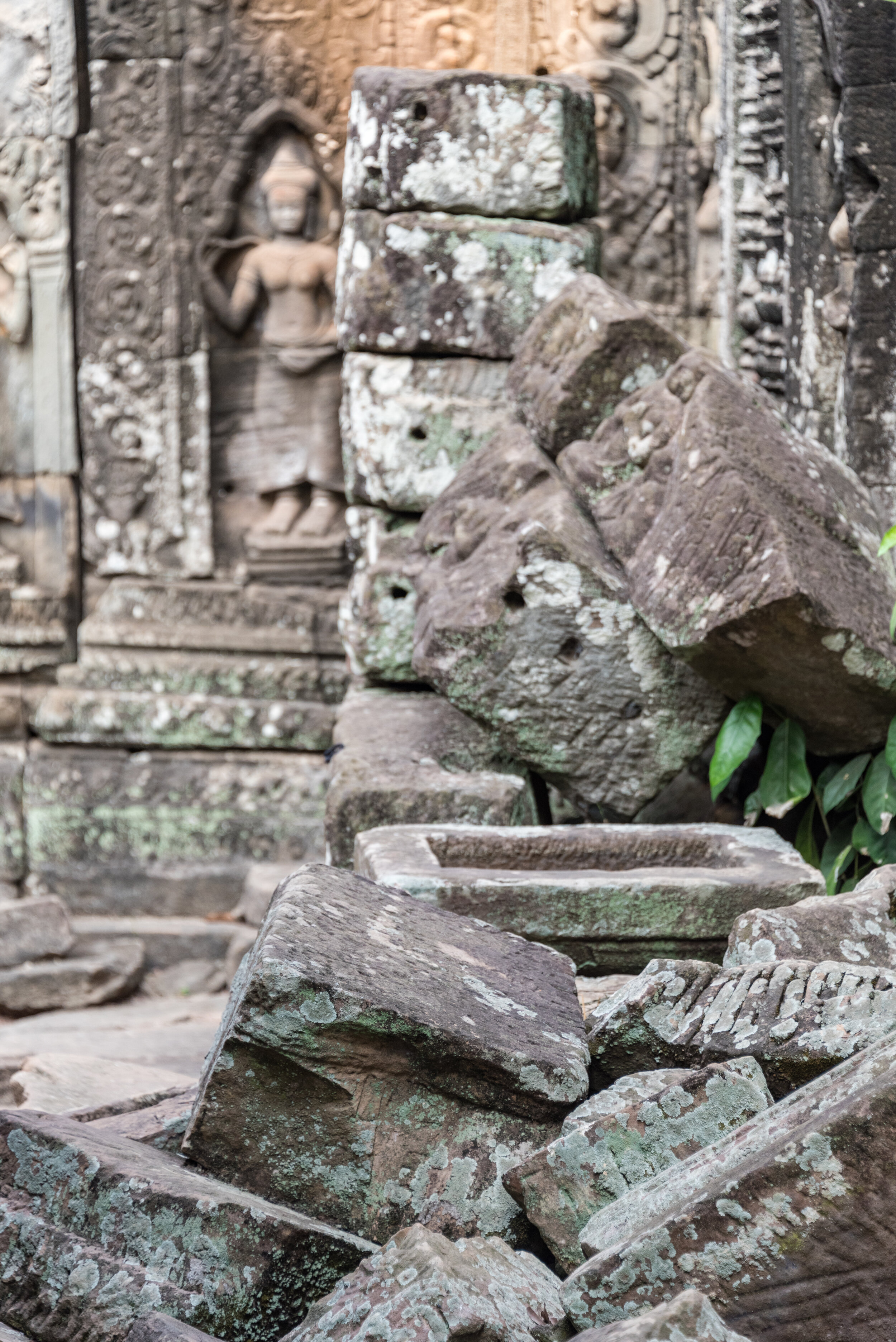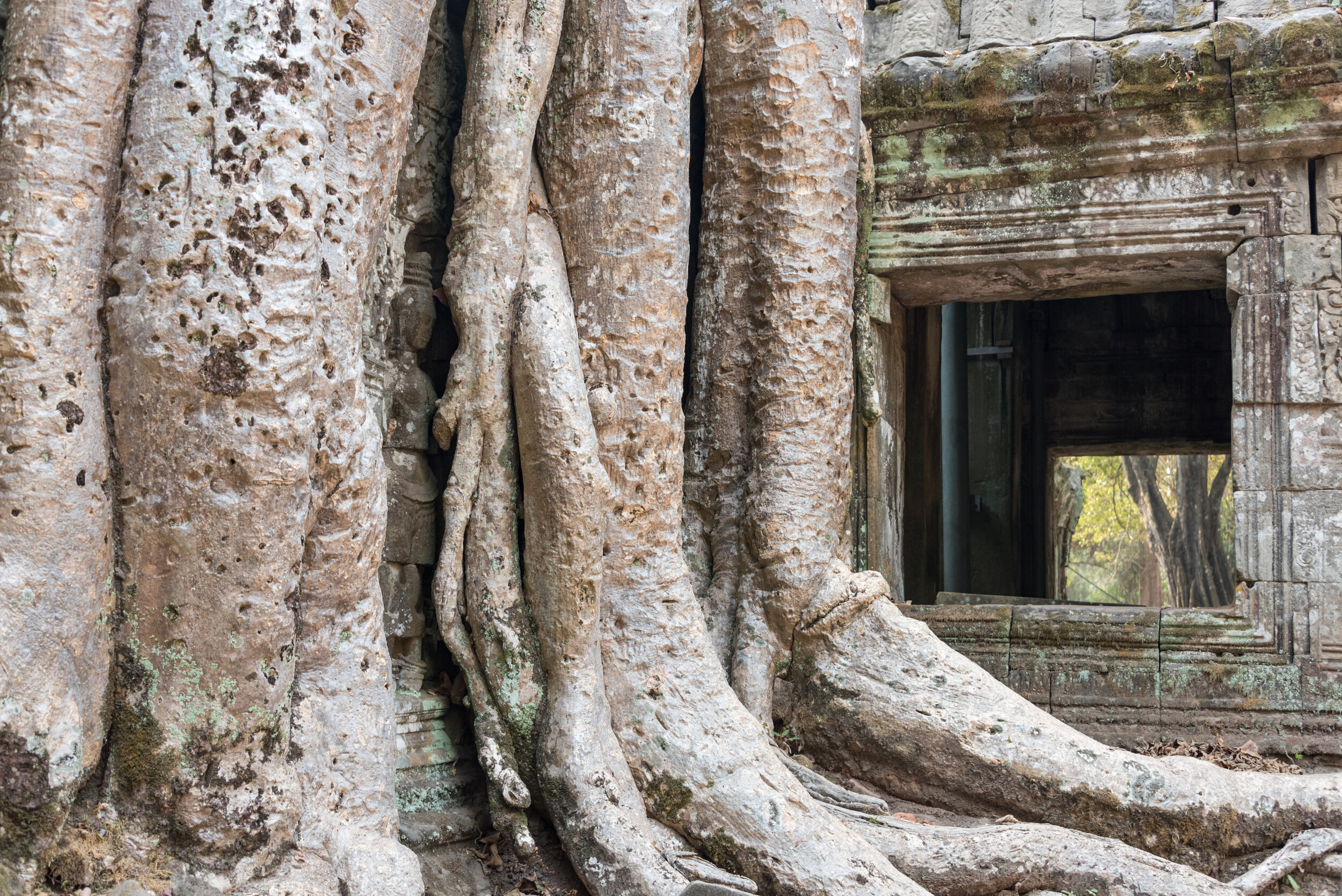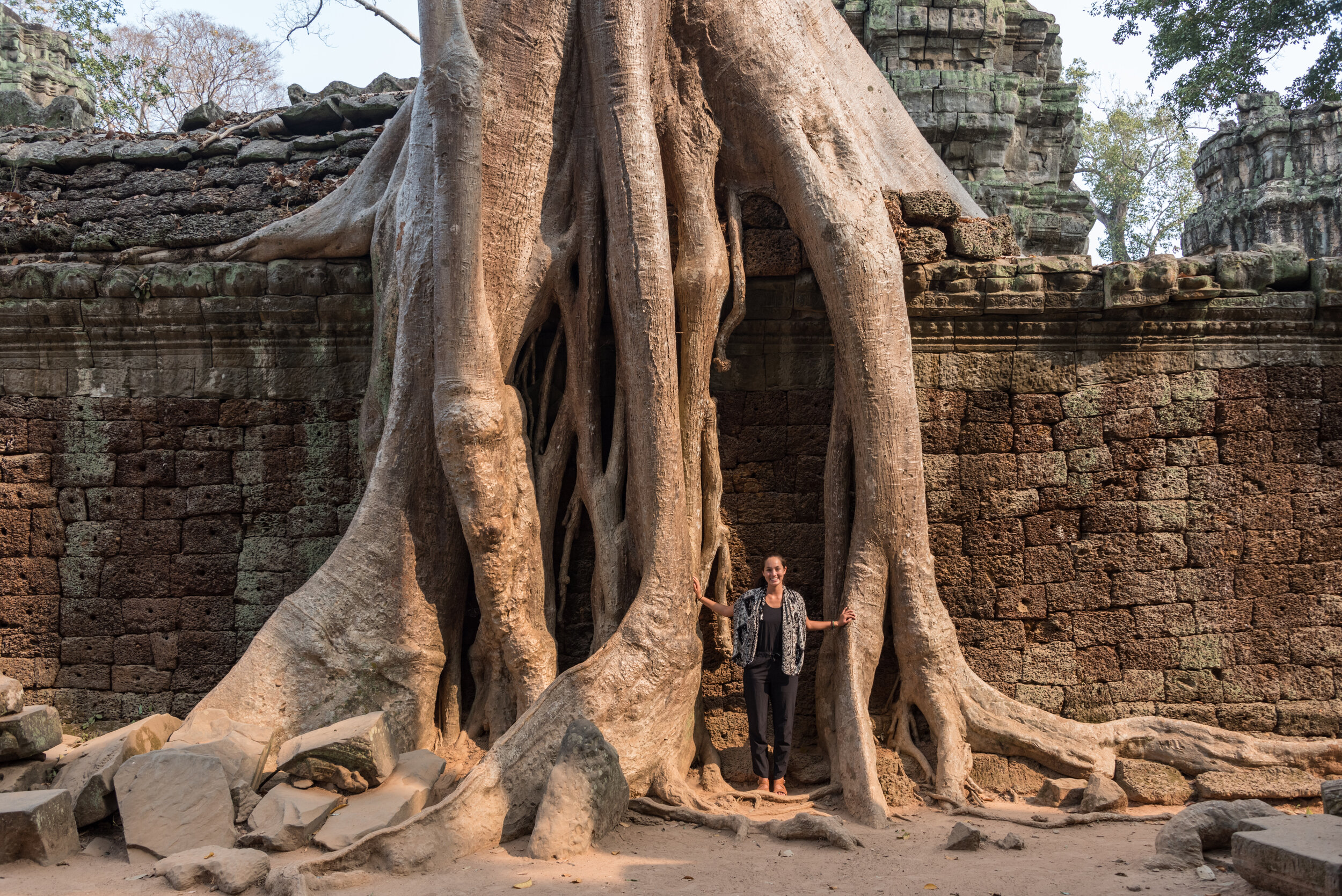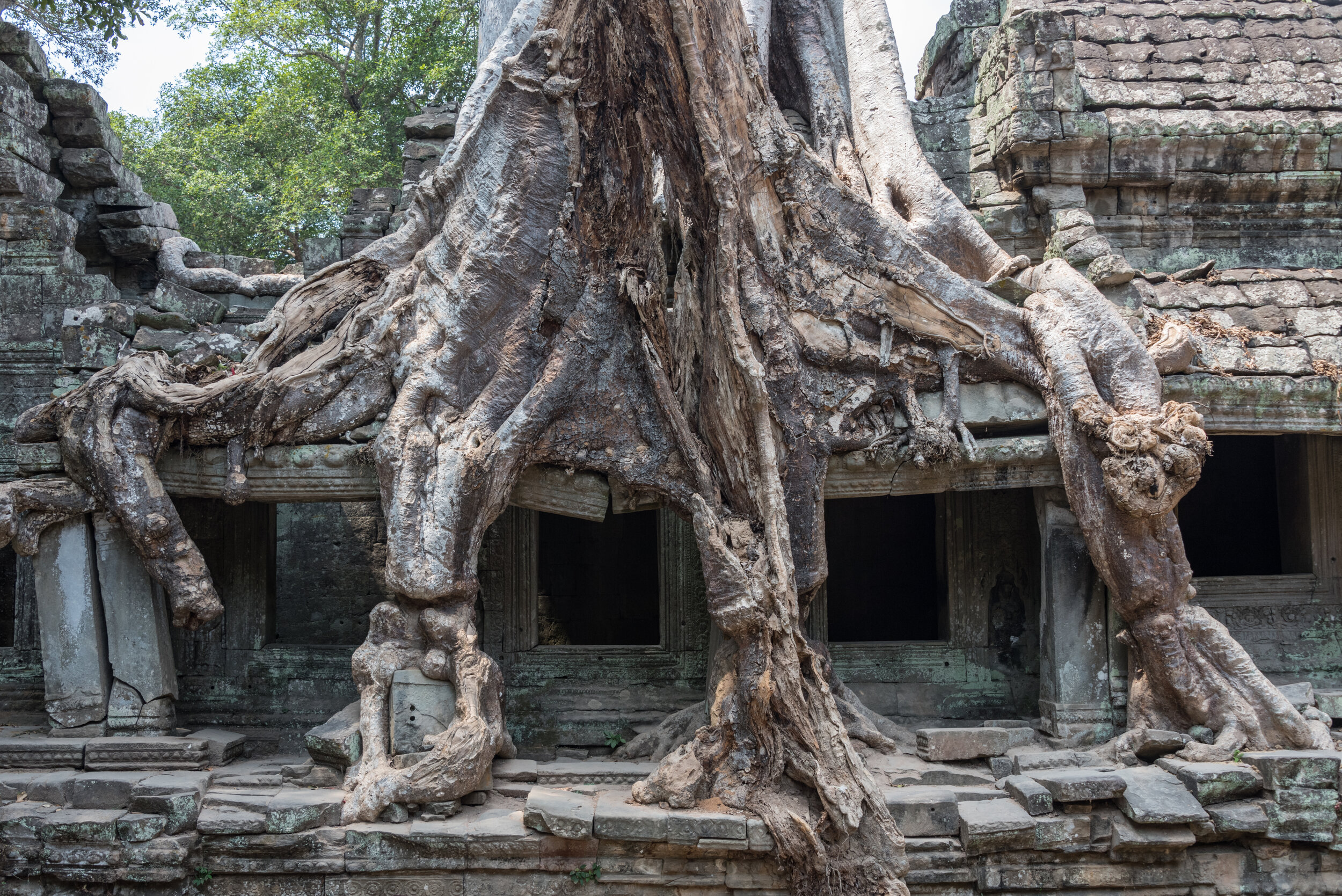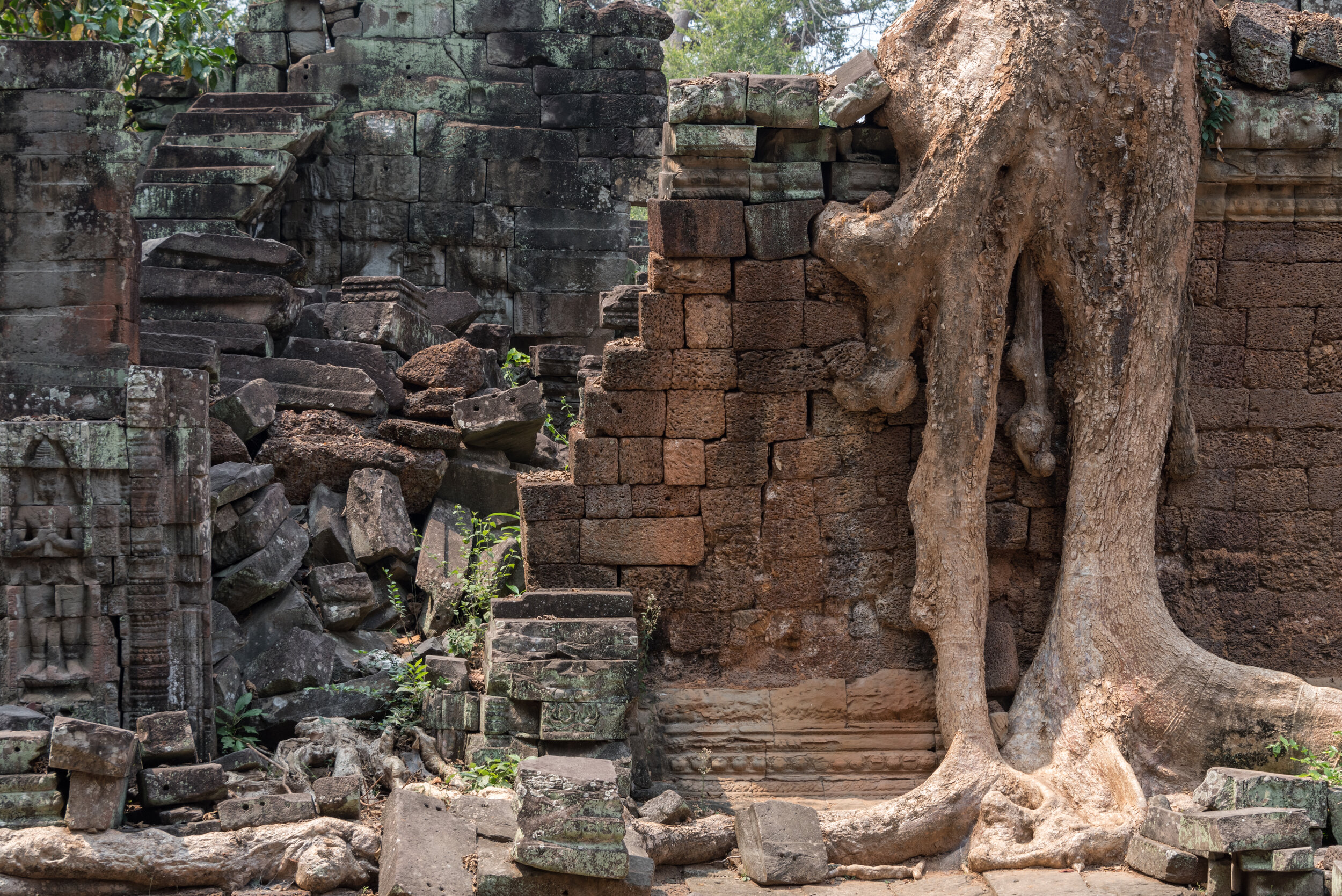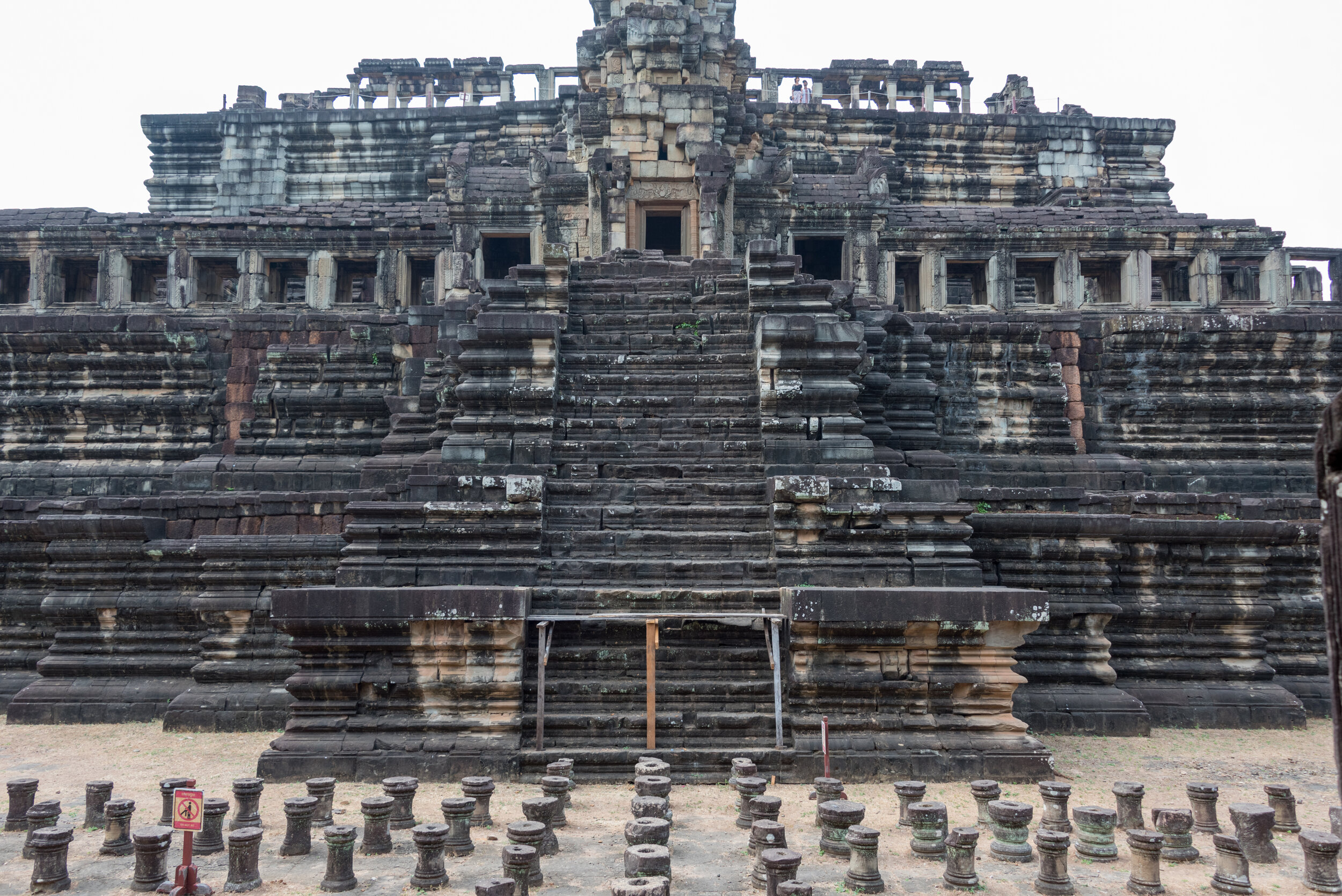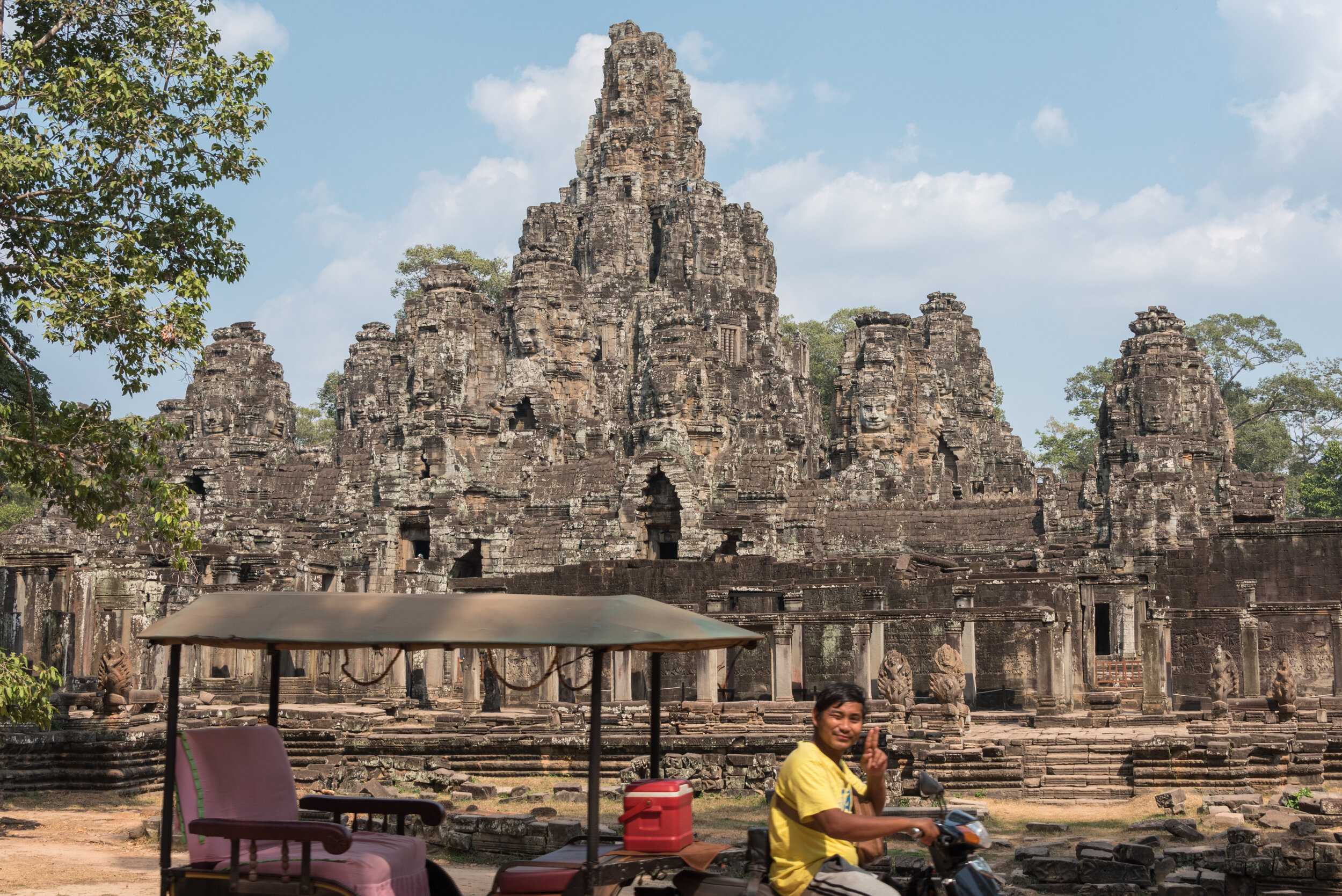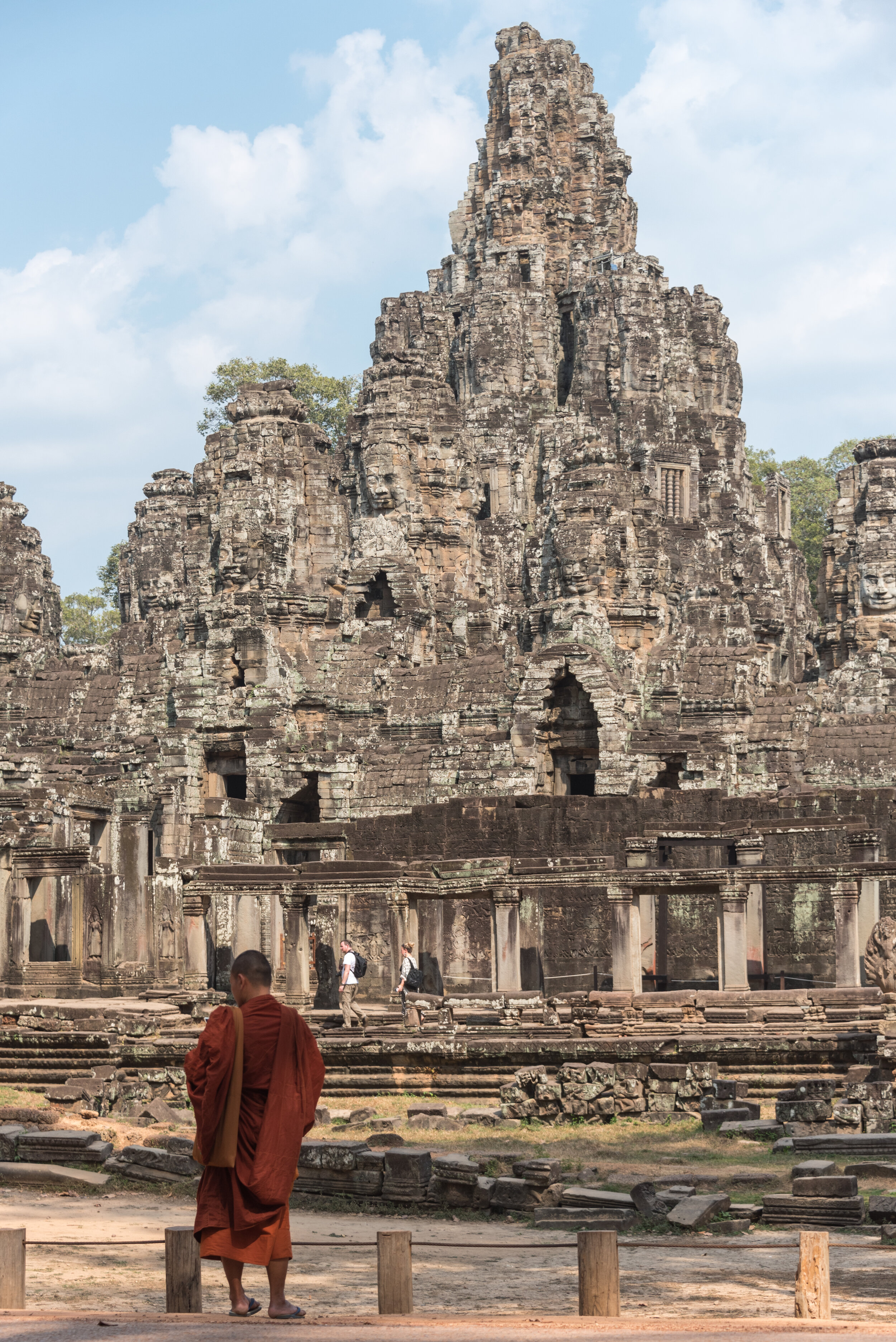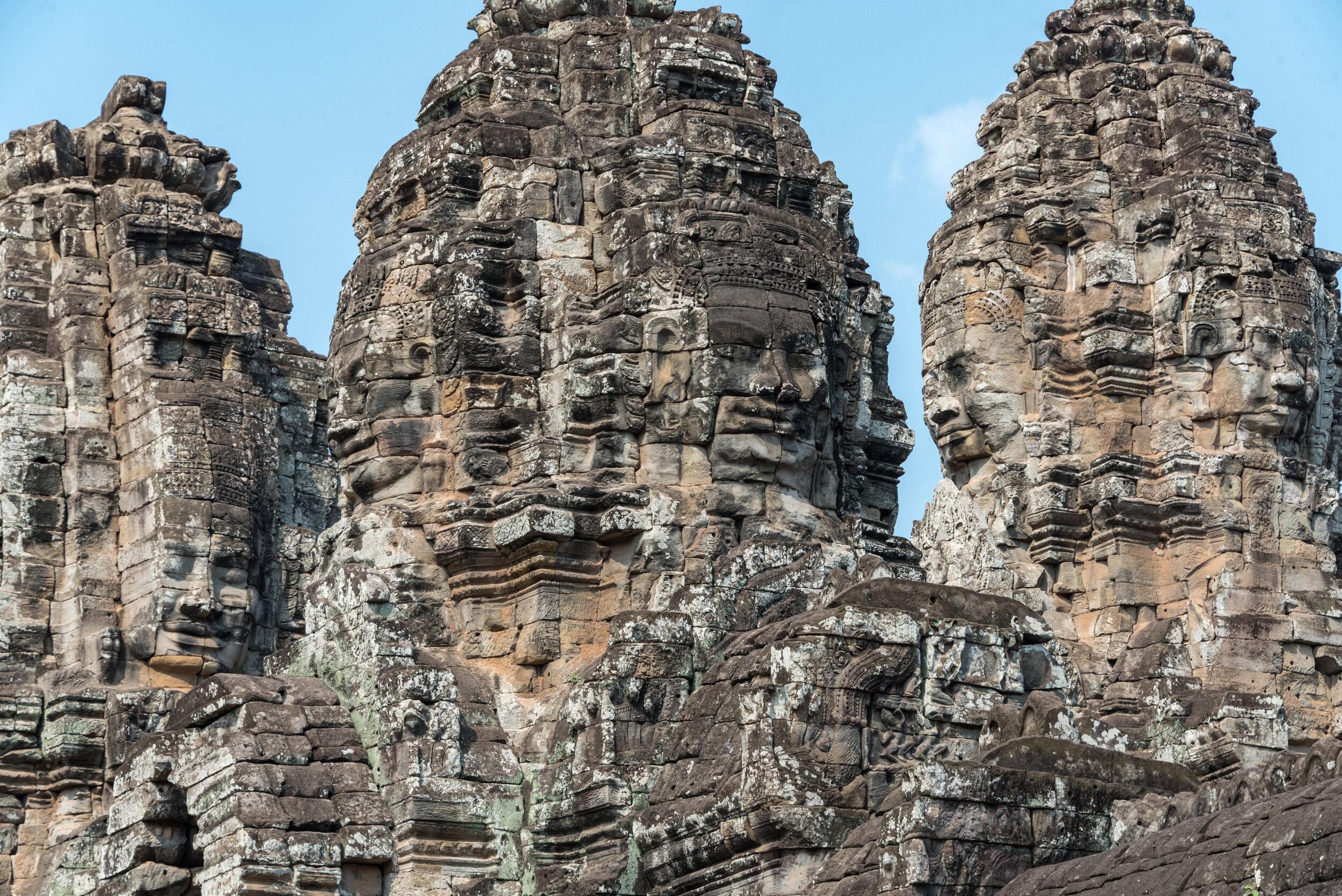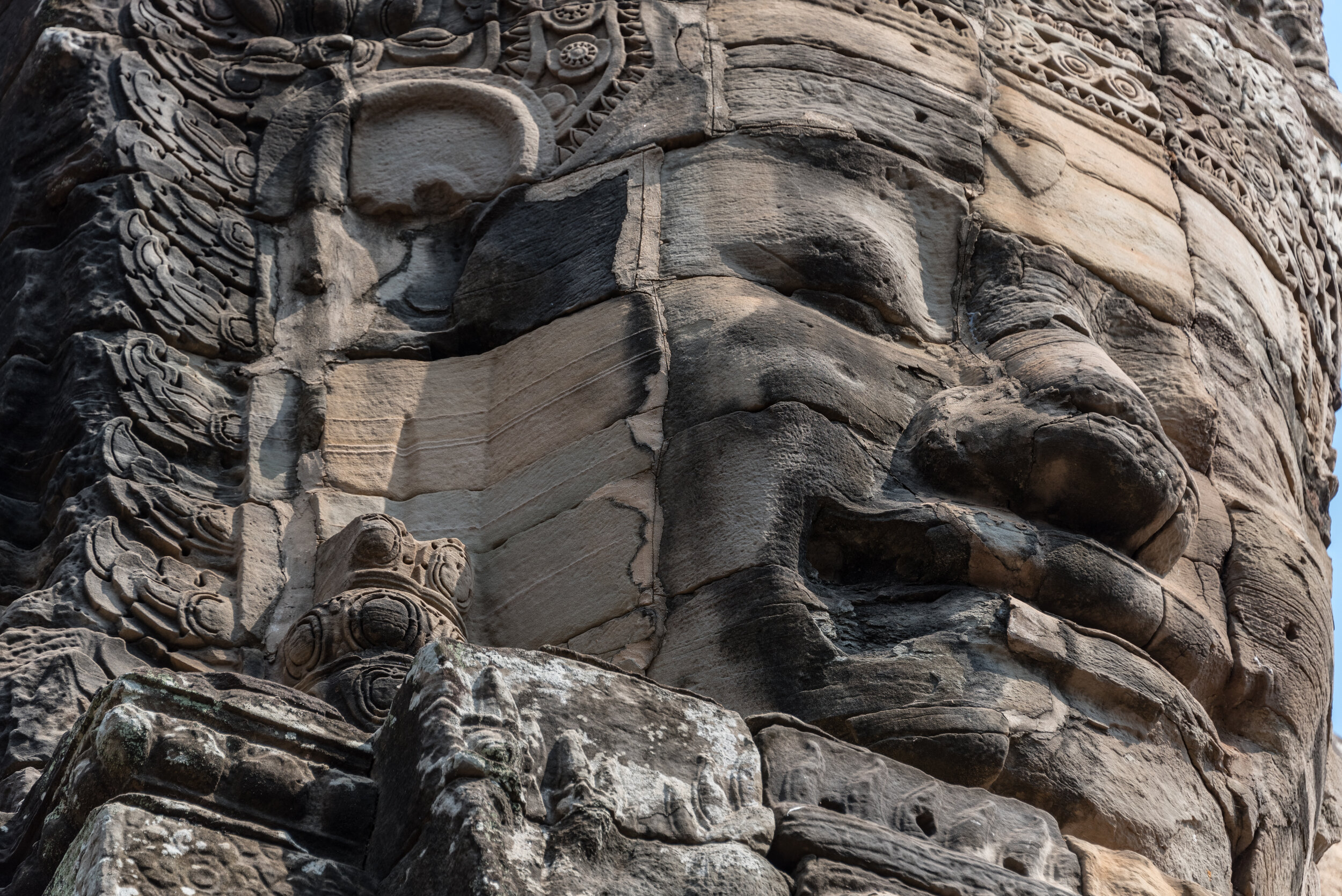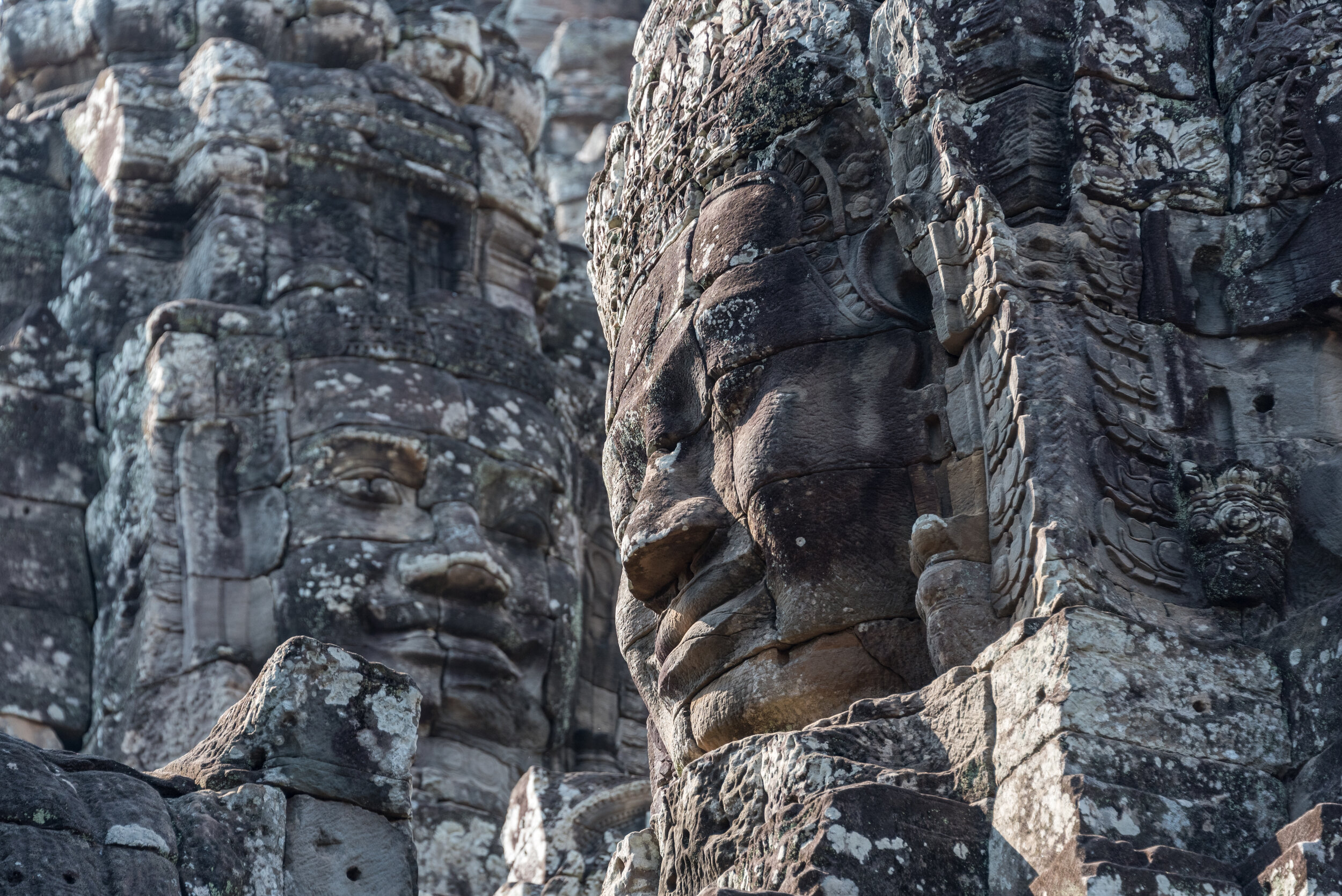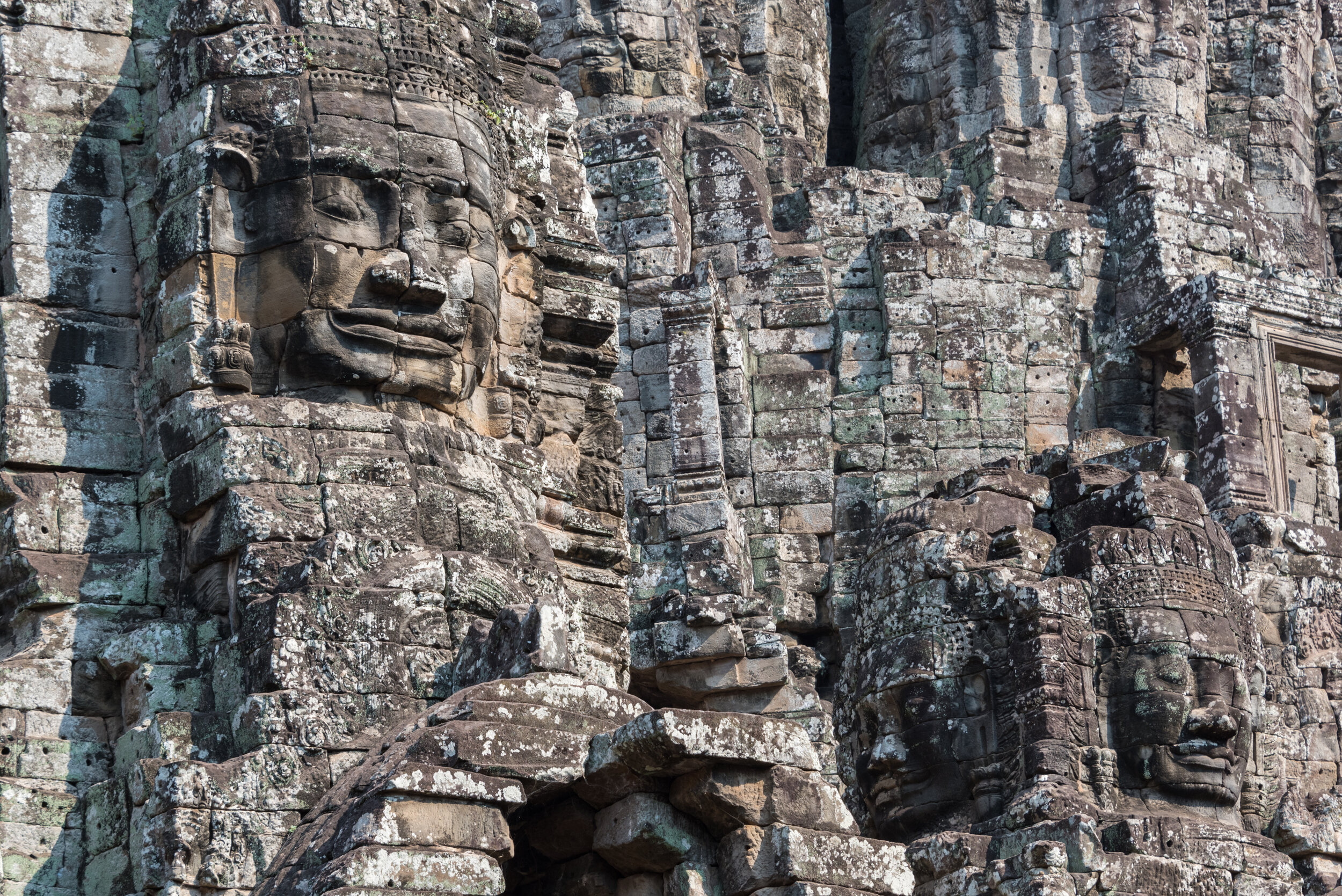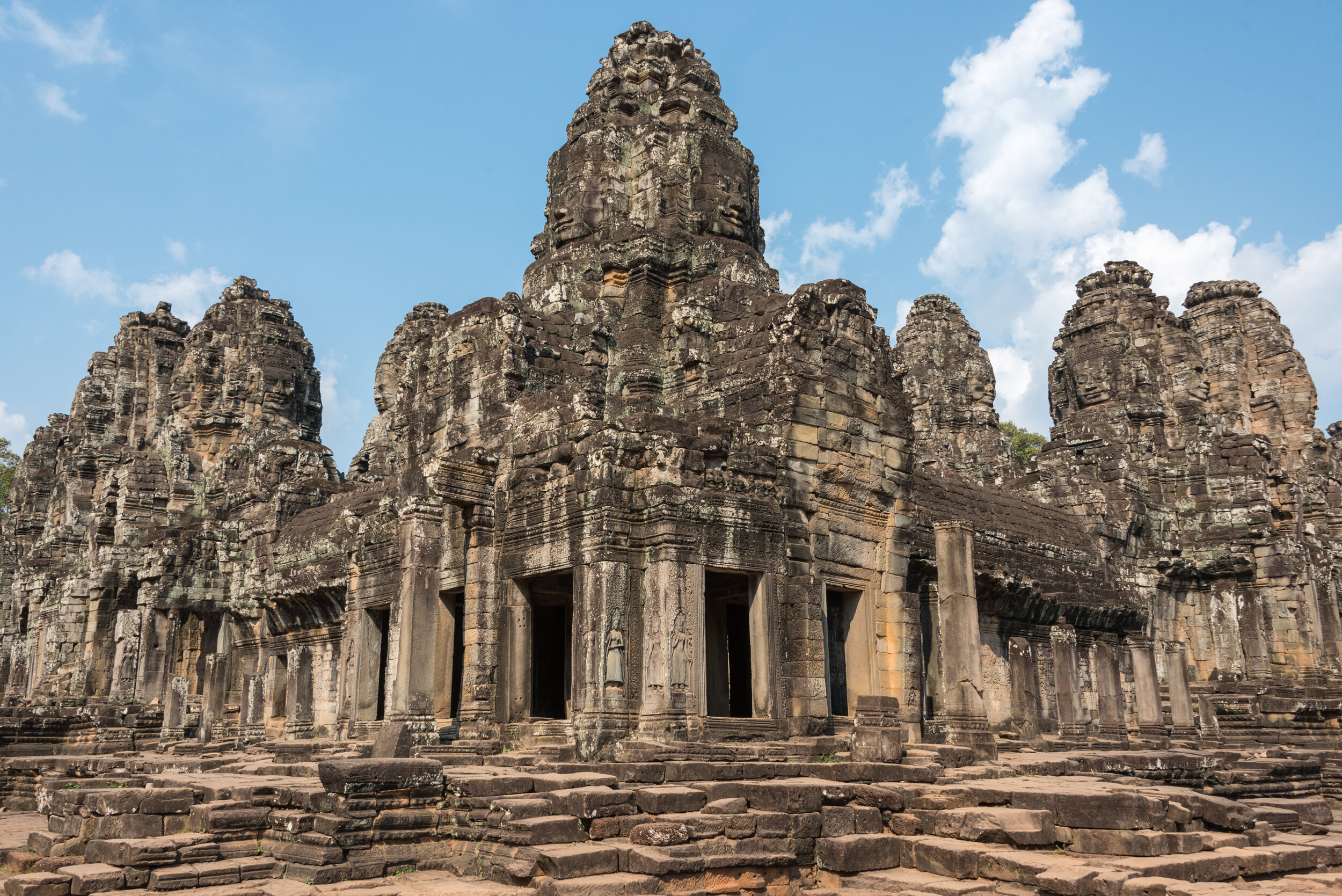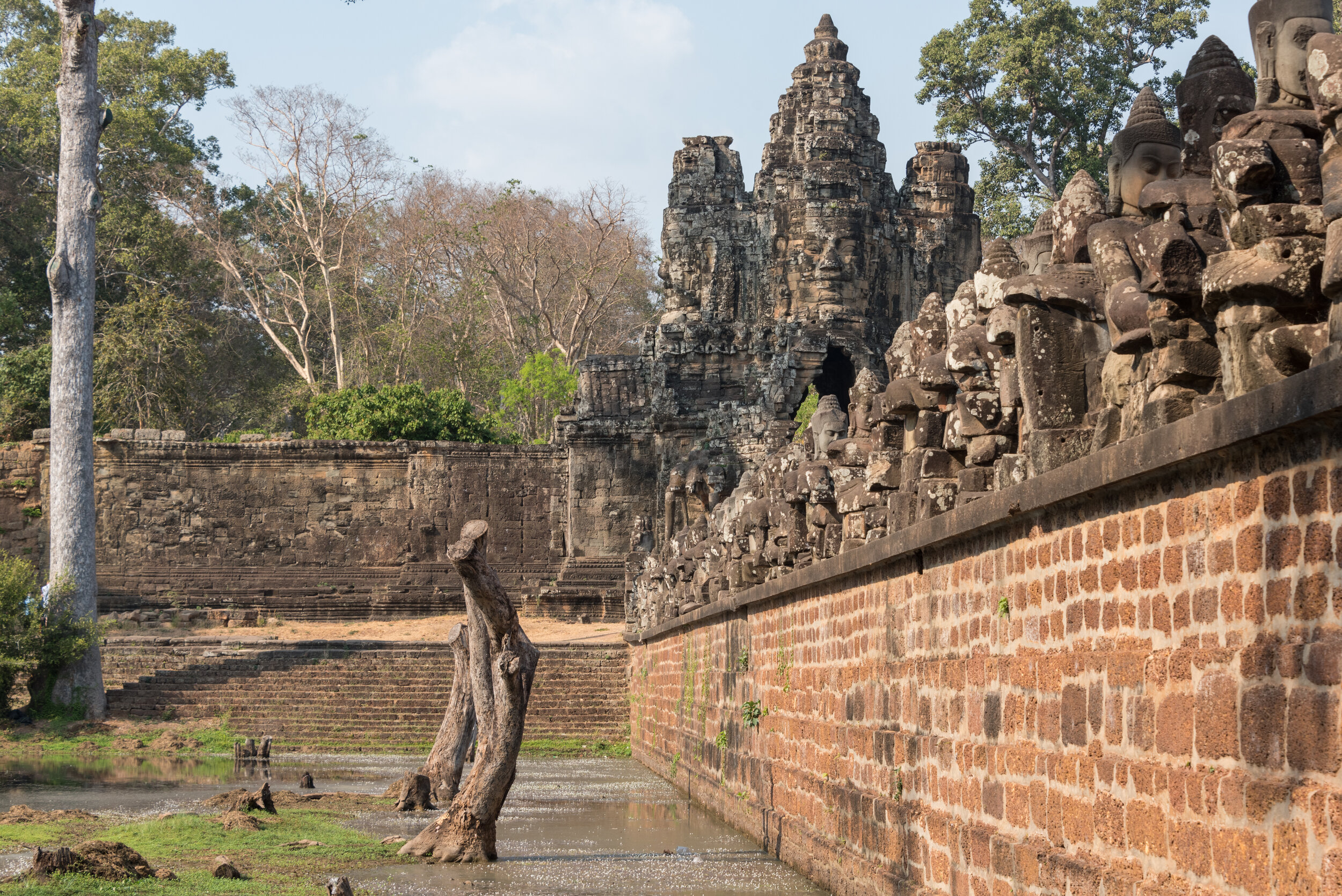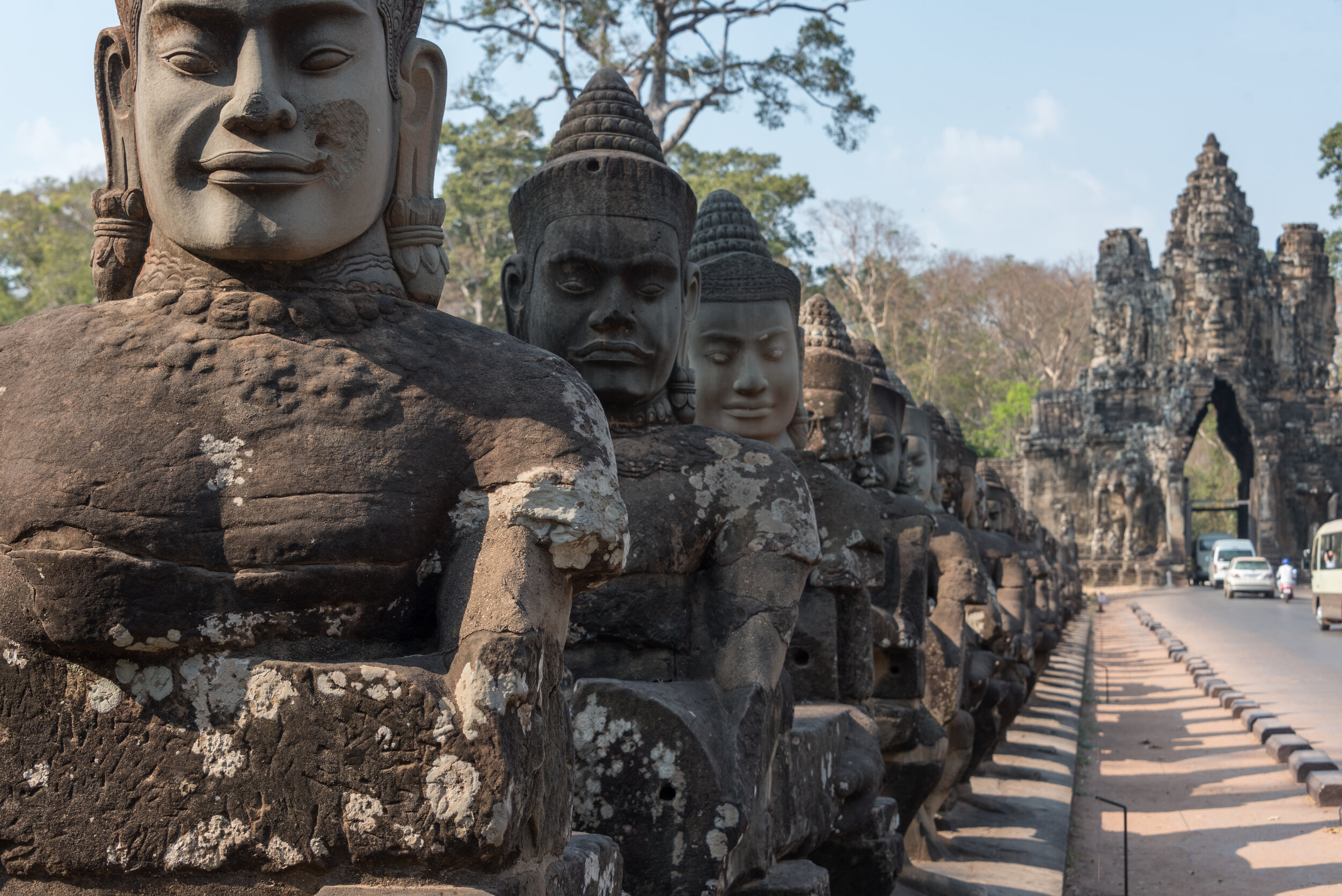Some sights are worth repeating.
Four years removed from my last exploration of Angkor Wat, I found myself back at the staggering compound of ruined temples in Cambodia, this time trading the comfort of a tuk tuk for a questionably stable mountain bike as my mode of transportation through the maze of temple complexes and courtyards that make up the famous Angkor Wat.
After a 5am wake up call, we hopped on our bikes, flashlight in mouth, and made our way through the dark towards the back entrance of the postcard temple from which the complex gets its name. Having shared the sunrise with the hundreds of tourists that gather in front of the temple on my previous visit, we opted this time to escape the crowds and instead went to the backside, hoping to catch a glimpse of the first morning rays on the spires, rather than see the sun rise over the temple. As is often the case with sunrises, the hour or so we spent in wait was a bit anticlimactic, as the hazy skies gradually brightened, blocking the rays of the sun. No matter, we made our way inside the temple and began the exploration through narrow passageways and immense courtyards, past monks handing out blessings and the most intricate of carvings along seemingly every wall. Windows provided views of the vast surrounds, while staircases seemed to be hidden around every corner. If so many weren’t blocked off, it would not have taken long to be completely lost in it all.
The main temple of Angkor would be a sufficient sight in and of itself, but, thankfully for us, it’s just the beginning. The entire complex is enormous, covering over 400 acres and containing 70+ temple complexes and hundreds of smaller sites. The complexes were built by the Khmer people in the 12th century, and contain a mix of Buddhist and Hindu temples. When the temples were rediscovered in the 1860s, nature had run roughshod on the place for a few hundred years. What’s left is a mix of beautiful architecture ominously shrouded in horror-movie-esque root systems growing in, around, and on top of temple walls and rooftops. Cycling around the various complexes made for quite the day, but any fatigue was suppressed by the seemingly endless ruins to discover, often times all by ourselves. While the iconic scenes are quite the spectacle, particularly Ta Prohm (Tomb Raider Temple) and the many faces of Bayon, it’s the random bulbous root wrapped around an enormous rubble pile, or the small chamber with a beam of light shining through the hole in the roof that you stumble upon at just the right time of day that really makes Angkor Wat and its temples a joy to explore. Every visit will yield new scenes, every time of day a new shadow that accentuates the ongoing battle between man’s creations and mother nature. Making our way in and out of the city walls felt like we were storming some kind of ancient castle, with giant faces staring down at us as if to warn us not to enter lest we dare tempt our fates. Enter we did, however, perhaps with some chills, a product of some curse sent down from the ominous onlooker perched in stone above the gates.
Twelve hours in, we abandoned our two wheels and kicked our feet up in front of the main temple of Angkor again, basking in the afternoon air as golden hour had begun on the mighty temple’s spires. We watched tourists of all kinds begin to slowly scatter, leaving us alone to enjoy a peaceful end to an adventurous day discovering as many of the hidden and not so hidden secrets of a true marvel of both man and nature. Crossing back across the giant moat to make our way back into town, we walked down to the water, finding that the greenery we’d seen below was actually clovers. Peculiarly, every single clover was of the 4-leaf variety, which seemed quite fitting to find after months and months of experiencing so much of the very best this earth and its inhabitants have to offer.
Lucky us…

